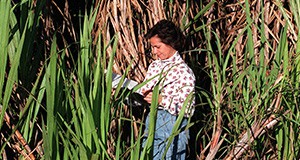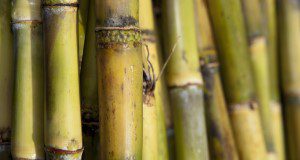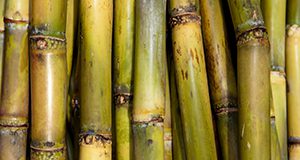Sugarcane growth on mineral soils in Florida can often be highly variable as related to the nature of the soils. The soil factor that best relates to sugarcane growth is soil organic matter content. Very stunted sugarcane is also associated with high nematode populations, which indicate high risk of crop damage. This new 4-page publication of the UF/IFAS Agronomy Department discusses grower options for evaluating and increasing soil organic matter. Written by J. Mabry McCray and Stewart Swanson.
https://edis.ifas.ufl.edu/ag441
Tag: J. Mabry McCray
Elemental Sulfur Recommendations for Sugarcane on Florida Organic Soils
Micronutrient deficiencies can be important limiting factors in alkaline soils, with most micronutrients becoming less available for plant uptake as soil pH increases. This 6-page document is intended primarily for Florida sugarcane growers but may also be useful to researchers and others interested in sugarcane nutrition. It presents revised elemental sulfur recommendations for sugarcane grown on Florida organic soils along with supporting information. Written by J. Mabry McCray, and published by the UF/IFAS Agronomy Department, February 2019.
http://edis.ifas.ufl.edu/ag429
Potassium Fertilizer Recommendations for Sugarcane on Florida Organic Soils
Potassium is a primary plant nutrient that is required in large amounts by sugarcane. About 74% of the 400,000 acres of Florida sugarcane is grown on organic soils in the Everglades Agricultural Area. Potassium is not a component of organic matter and virgin Histosols contain very low concentrations of K, so release of K through mineralization of organic matter in these soils is not an adequate K source for plant growth. This 7-page document presents revised potassium fertilizer recommendations for sugarcane grown on Florida organic soils along with supporting information. Written by J. Mabry McCray, and published by the UF/IFAS Agronomy Department, February 2019.
http://edis.ifas.ufl.edu/ag428
Nitrogen Fertilizer Recommendations for Sugarcane Production for Sugar on Florida Sand Soils

Sands used in sugarcane production in Florida have low levels of organic matter, silt, and clay, and they provide little N through mineralization of organic matter and possess a low capacity for N retention as a result. Because these soils are highly leachable, N must be managed well to ensure adequate nutrition for the crop as well as protection of groundwater. This new 4-page fact sheet is part of the Sugarcane Handbook, and it discusses sand soils used in sugarcane production, sugar yield response to nitrogen, and revised nitrogen recommendations. Written by J. Mabry McCray, Kelly T. Morgan, and Les Baucum, and published by the UF Agronomy Department, February 2016.
http://edis.ifas.ufl.edu/sc101
Phosphorus Fertilizer Recommendations for Sugarcane Production on Florida Organic Soils (SSAGR348/SC091)
 Much of the sugarcane grown in South Florida is on organic soils in the Everglades Agricultural Area, which is a phosphorus-limited system. Phosphorus loads in drainage water in the Everglades Agricultural Area are an environmental concern so it is important for sugarcane growers to use best management practices such as soil testing and to follow fertilizer recommendations. This document contains updated UF/IFAS phosphorus fertilizer recommendations for Florida organic soils. This 7-page fact sheet was written by J. Mabry McCray, Ronald W. Rice, and Alan L. Wright, and published by the UF Department of Agronomy, July 2012. http://edis.ifas.ufl.edu/sc091
Much of the sugarcane grown in South Florida is on organic soils in the Everglades Agricultural Area, which is a phosphorus-limited system. Phosphorus loads in drainage water in the Everglades Agricultural Area are an environmental concern so it is important for sugarcane growers to use best management practices such as soil testing and to follow fertilizer recommendations. This document contains updated UF/IFAS phosphorus fertilizer recommendations for Florida organic soils. This 7-page fact sheet was written by J. Mabry McCray, Ronald W. Rice, and Alan L. Wright, and published by the UF Department of Agronomy, July 2012. http://edis.ifas.ufl.edu/sc091
Calcium Silicate Recommendations for Sugarcane on Florida Organic Soils (SSAGR350/SC092)
 Although silicon isn’t an essential plant nutrient, adding calcium silicate to soils low in soluble silicon increases yield an average of 20%. This 5-page fact sheet describes calcium silicate recommendations for sugarcane on organic soils, developed using field studies at several locations. Written by J. Mabry McCray, Ronald W. Rice, and Leslie E. Baucum, and published by the UF Department of Agronomy, August 2011. (UF/IFAS Photo: Josh Wickham)
Although silicon isn’t an essential plant nutrient, adding calcium silicate to soils low in soluble silicon increases yield an average of 20%. This 5-page fact sheet describes calcium silicate recommendations for sugarcane on organic soils, developed using field studies at several locations. Written by J. Mabry McCray, Ronald W. Rice, and Leslie E. Baucum, and published by the UF Department of Agronomy, August 2011. (UF/IFAS Photo: Josh Wickham)
http://edis.ifas.ufl.edu/sc092
SSAGR335/AG345 Sugarcane Nutrient Management Using Leaf Analysis
SSAGR335, a 7-page illustrated fact sheet by J. Mabry McCray and Rao Mylavarapu, provides growers with sufficiency categories of leaf nutrient concentrations and with nutrient management suggestions for each category. Includes references. Published by the UF Department of Agronomy, July 2010.
http://edis.ifas.ufl.edu/ag345
SS-AGR-228/SC028 Nutritional Requirements for Florida Sugarcane
Revised! SS-AGR-228, an 8-page fact sheet by R. W. Rice, R. A. Gilbert and J. M. MCray, provides an overview of plant nutrition, with general guidelines and deficiency symptoms for each nutrient for sugarcane production in Florida. Includes references. Published by the UF Department of Agronomy, December 2009.
http://edis.ifas.ufl.edu/sc028
SSAGR128/SC075 Sugarcane Plant Nutrient Diagnosis
Revised! SS-AGR-128, a 26-page illustrated fact sheet by J. Mabry McCray, Ronald W. Rice, Ike V. Ezenwa, Timothy A. Lang, and Les Baucum, assists sugarcane growers make improved decisions regarding fertilization through the use of leaf nutrient analysis along with visual evaluation of malnutrition symptoms to complement a soil testing program. Includes references. Published by the UF Department of Agronomy, December 2009.
http://edis.ifas.ufl.edu/SC075
SL295/SS508 Review of Current Sugarcane Fertilizer Recommendations: A Report from the UF/IFAS Sugarcane Fertilizer Standards Task Force
SL-295, a 6-page report by K.T. Morgan, J.M. McCray, R.W. Rice, R.A. Gilbert and L.E. Baucum, reports the findings of a task force of Florida agronomists and soil scientists, agents and local grower representatives. It includes a review of the current fertilizer recommendations for sugarcane, a review of recent sugarcane fertilizer research, and an assessment of the gaps and recommended research priorities. Published by the UF Department of Soil and Water Science, July 2009.
http://edis.ifas.ufl.edu/SS508
SL290/SS503 Persistence of Plant-Available Phosphorus in Muck Soils after Fertilizer Application
SL-290, a 5-page fact sheet by Alan L. Wright, Edward A. Hanlon, J. Mabry McCray, and David D. Sui, provides growers in the Everglades Agricultural Area with information about the organic soils in southern Florida and their management to improve crop production while also reducing adverse environmental effects, especially during times of land use change. Includes references. Published by the UF Department of Soil and Water Science, May 2009.
http://edis.ifas.ufl.edu/SS503

